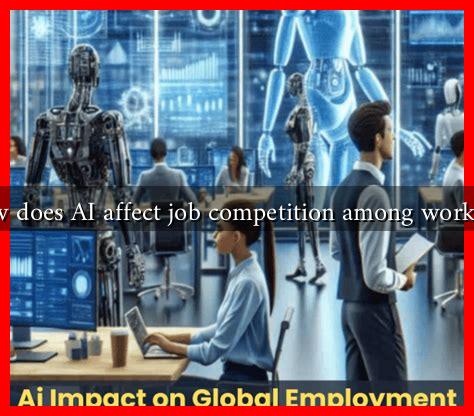-
Table of Contents
How Does AI Affect Job Competition Among Workers?
The advent of artificial intelligence (AI) has transformed various sectors, leading to significant changes in job competition among workers. As AI technologies continue to evolve, they not only enhance productivity but also reshape the labor market landscape. This article explores the multifaceted impact of AI on job competition, examining both the opportunities and challenges it presents to workers.
The Rise of AI in the Workplace
AI technologies, including machine learning, natural language processing, and robotics, are increasingly being integrated into workplaces. According to a report by McKinsey, up to 800 million global workers could be displaced by automation by 2030. This statistic underscores the urgency of understanding how AI affects job competition.
Opportunities Created by AI
While AI poses challenges, it also creates new opportunities for workers. Here are some ways AI is fostering job creation:
- New Job Categories: AI has led to the emergence of entirely new job categories, such as AI ethics compliance officers, data scientists, and machine learning engineers.
- Enhanced Productivity: By automating repetitive tasks, AI allows workers to focus on more complex and creative aspects of their jobs, potentially leading to higher job satisfaction and productivity.
- Upskilling and Reskilling: The demand for workers skilled in AI technologies has prompted organizations to invest in training programs, enabling employees to acquire new skills and adapt to changing job requirements.
Challenges Posed by AI
Despite the opportunities, AI also presents significant challenges that intensify job competition:
- Job Displacement: Many low-skilled jobs are at risk of being automated. For instance, a study by the World Economic Forum predicts that 85 million jobs may be displaced by 2025 due to AI and automation.
- Wage Pressure: As AI systems become capable of performing tasks traditionally done by humans, there may be downward pressure on wages, particularly for low-skilled positions.
- Skill Gaps: The rapid pace of AI development can create skill gaps, where workers may find themselves unqualified for available jobs, leading to increased competition for those who possess the necessary skills.
Case Studies: AI in Action
Several industries illustrate the dual impact of AI on job competition:
- Manufacturing: In manufacturing, robots and AI systems have streamlined production processes. While this has led to job losses in some areas, it has also created demand for skilled technicians who can maintain and program these machines.
- Healthcare: AI applications in healthcare, such as diagnostic algorithms, have improved patient outcomes. However, they also raise concerns about the future roles of radiologists and other specialists, leading to competition among healthcare professionals to adapt to new technologies.
- Retail: The rise of AI-driven customer service chatbots has transformed the retail landscape. While some customer service jobs may be at risk, new roles in AI management and customer experience design are emerging.
Strategies for Workers to Stay Competitive
To thrive in an AI-driven job market, workers can adopt several strategies:
- Continuous Learning: Engaging in lifelong learning and pursuing certifications in AI-related fields can enhance employability.
- Networking: Building professional networks can provide insights into industry trends and job opportunities.
- Adaptability: Being open to change and willing to adapt to new technologies is crucial for long-term career success.
Conclusion
AI is reshaping job competition among workers, presenting both opportunities and challenges. While it can lead to job displacement and increased competition, it also fosters new job creation and enhances productivity. Workers who embrace continuous learning and adaptability will be better positioned to navigate this evolving landscape. As AI continues to advance, understanding its implications on the labor market will be essential for both employees and employers alike.
For further reading on the impact of AI on jobs, you can explore resources from the World Economic Forum.


